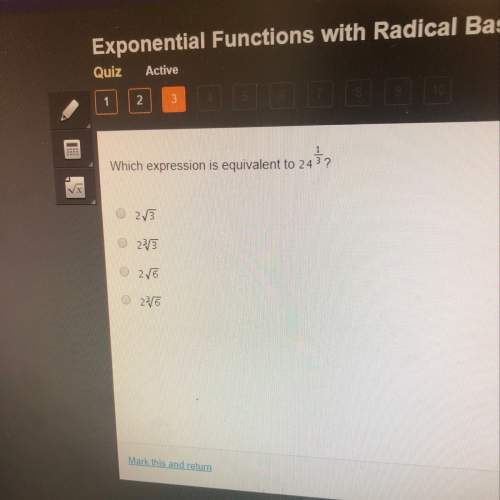
Mathematics, 29.02.2020 01:59 nathanowens121224
George is considering two different investment options. The first option offers 7.4% per year simple interest on the
initial deposit. The second option offers a 6.5% interest rate but is compounded quarterly. He may not withdraw any of
the money for three years after the initial deposit. Once the minimum 3 years is reached, he can choose to withdraw his
money or continue to collect interest. Suppose that George opens one of each type of account and deposits $10,000
into each.
Part A: Determine the value of the simple interest investment at the end of three years. Use the formula
A = P + Prt, where A represents the value of the investment, P represents the original amount, r represents the
rate, and t represents the time in years. Show your work.
Part B: Determine the value of the compound-interest investment at the end of three years. Use the formula
A = P(1+) , where A represents the value of the investment, P represents the original amount, r represents
the rate compounded n times per year, and t represents the time in years.
Show your work.
Part : Which investment is better over the first three years?
Explain your answer by using your work from Parts A and B as support.
Part D: How would you advise George to invest his money if he is unsure how long he will keep the money in the
account? Justify your reasoning using a graph or table.

Answers: 3


Another question on Mathematics


Mathematics, 21.06.2019 20:30
The sum of these consecutive integers is equal to 9 less than 4 times the least of the integer. find the three integers
Answers: 1

Mathematics, 21.06.2019 21:00
Julie buys 2kg of apples and 7kg of pears ? 12.70. the pears cost ? 1.30 per kilogram what is the price per kilogram of the apples? show your working out
Answers: 2

Mathematics, 21.06.2019 21:30
The price of a visit to the dentist is calculated according to the formula 50+100n50+100n where nn is the number of cavities the dentist finds. on your last visit to the dentist, 22 cavities were found. what was the cost of your visit?
Answers: 2
You know the right answer?
George is considering two different investment options. The first option offers 7.4% per year simple...
Questions



Social Studies, 14.12.2020 18:20

Mathematics, 14.12.2020 18:20


Mathematics, 14.12.2020 18:20

Mathematics, 14.12.2020 18:20

Computers and Technology, 14.12.2020 18:20

Mathematics, 14.12.2020 18:20

English, 14.12.2020 18:20

Mathematics, 14.12.2020 18:20

Social Studies, 14.12.2020 18:20

Computers and Technology, 14.12.2020 18:20

Mathematics, 14.12.2020 18:20

English, 14.12.2020 18:20

Physics, 14.12.2020 18:20


History, 14.12.2020 18:20

Mathematics, 14.12.2020 18:20

 , where
, where 





